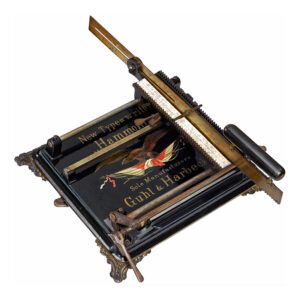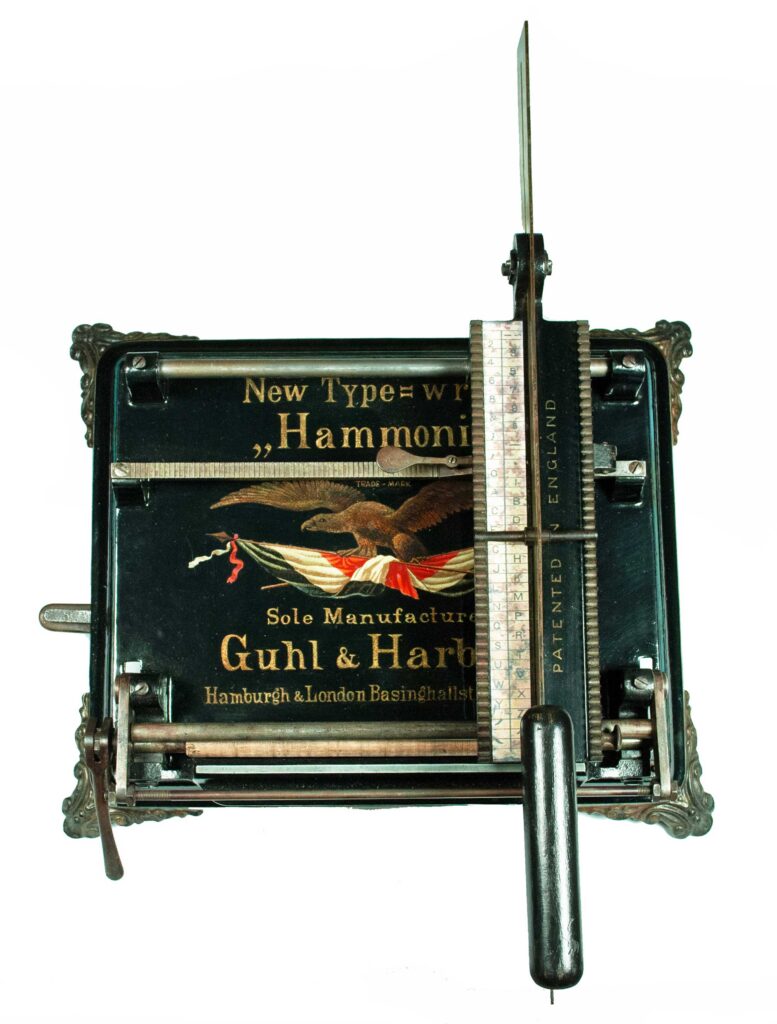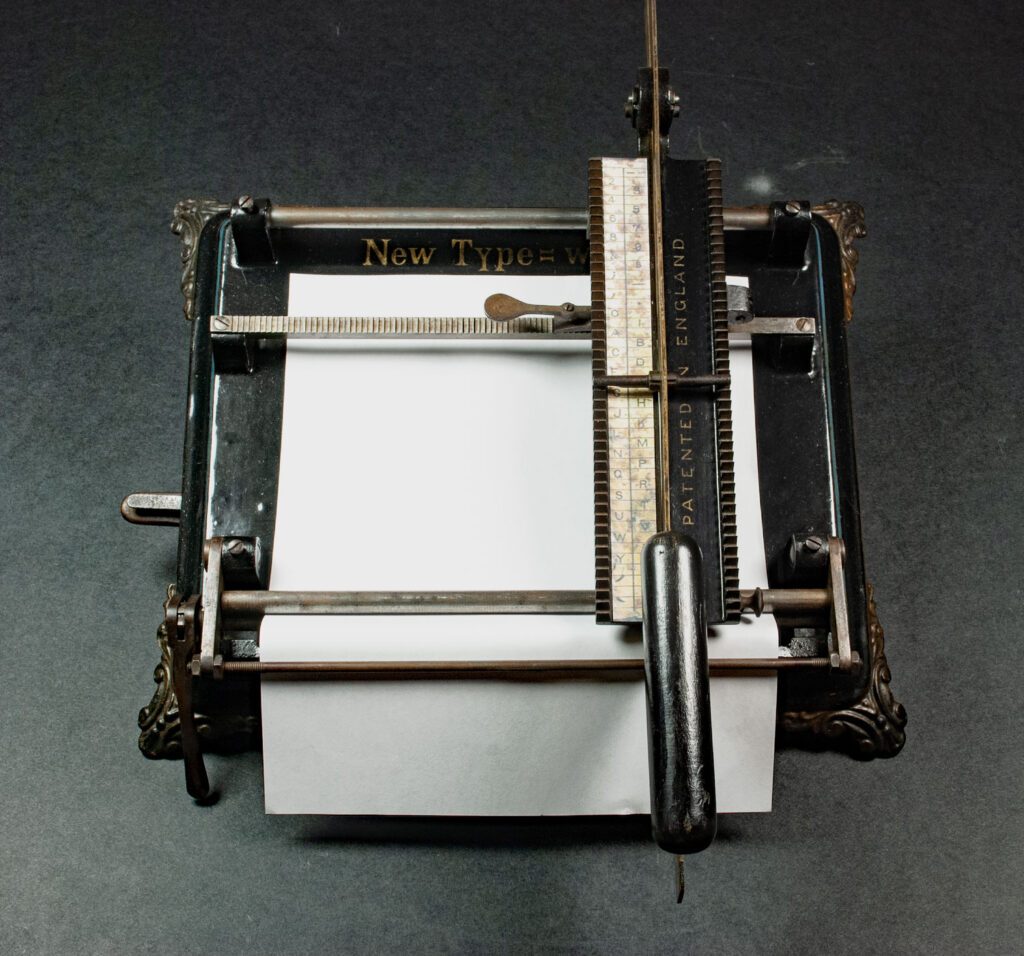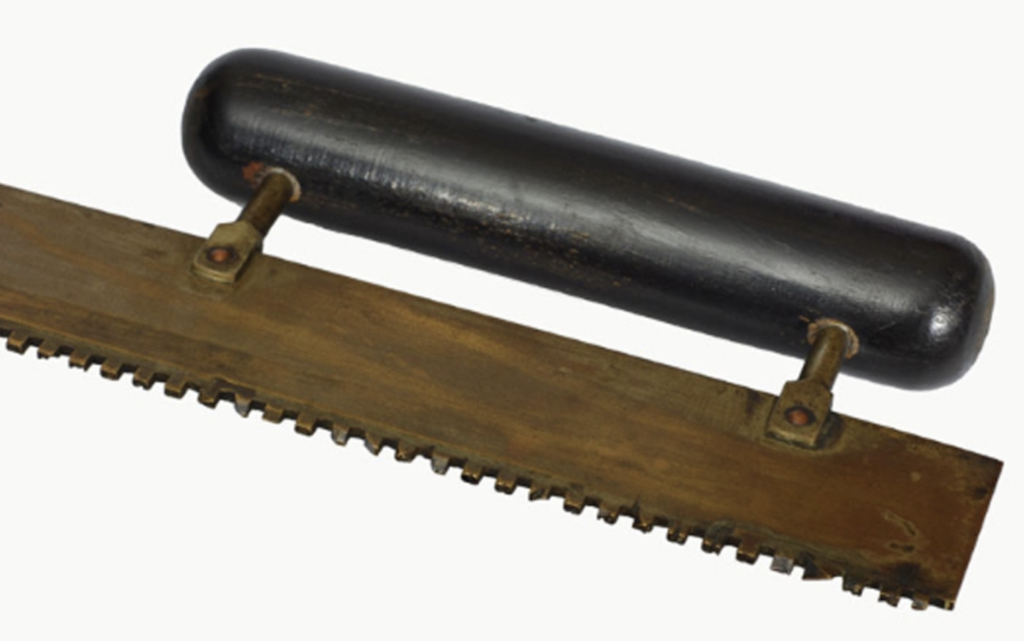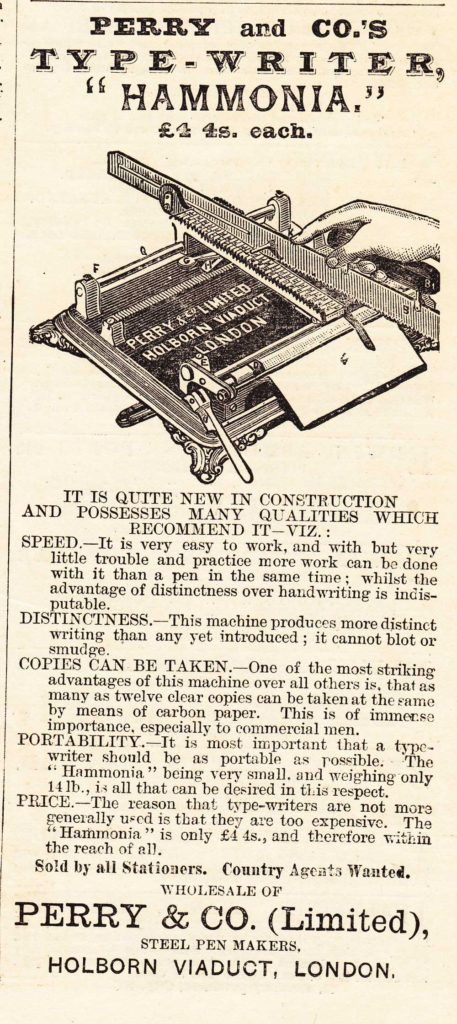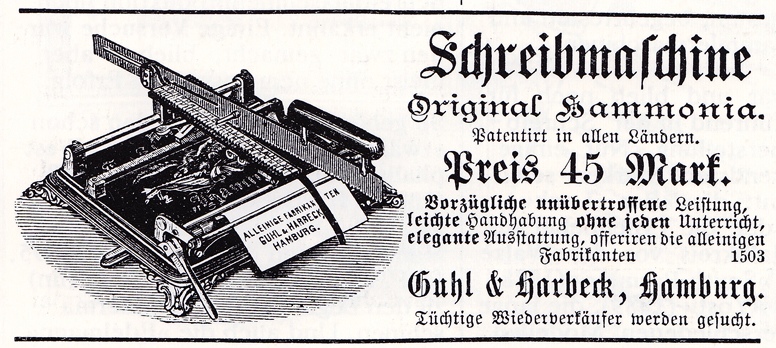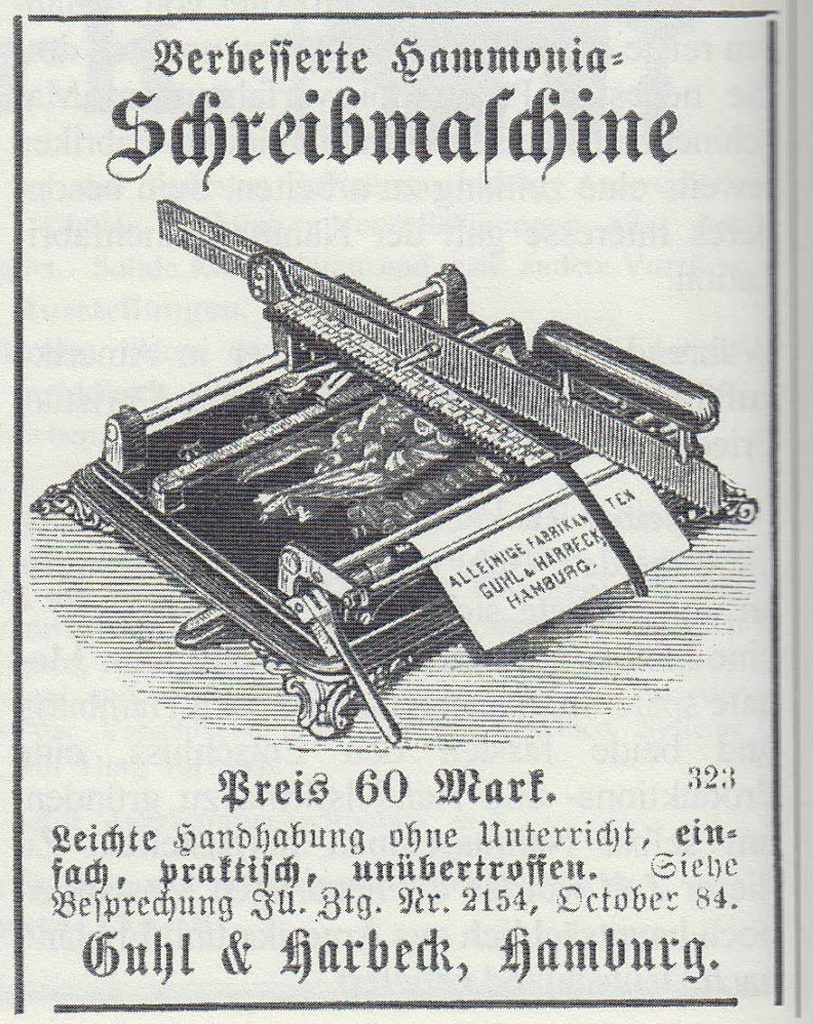The Hammonia was the first German typewriter, and the first European typewriter to be produced in any significant numbers.
It takes its name from the Latin word for Hamburg, the city where it was made. Hammonia is also the patron goddess of Hamburg.
The machine was invented by Andrew Hanson of London and first covered by a British patent in 1882. It was manufactured and marketed in 1884 by the Hamburg sewing machine factory Guhl & Harbeck, founded in 1866 by the locksmith Hermann Guhl and the merchant Christian Friedrich Harbeck.
This example, with English writing on the frame, was exported to their Canadian agent, R. J. McDowall.
The long brass blade has the characters cut out along its bottom edge (see detail below). To operate, one lifts the blade and moves it back and forth to select a character, then pushes the black wooden handle straight down, somewhat like a cheese slicer, to type the character.
The Hammonia typed only in capital letters. Inking was achieved with a band of carbon paper or cloth soaked in ink, housed in a capsule underneath the carriage. This band or ribbon was drawn through a slot to the printing point. It was not rewound but simply hung down over the edge of the typewriter and was replaced after a single use.
The Hammonia was designed as a low-cost alternative to the expensive American keyboard typewriters of the time, a Remington 2 cost nearly 500 marks. The Hammonia was initially offered for 45 marks, later increased to 60 marks, roughly one tenth the cost of an American import. However, due to its cumbersome operation and slow typing speed, the Hammonia was produced only for a short time and was replaced in 1888 by the Kosmopolit (Cosmopolitan).
“SPEED – It is easy to work, and with but very little trouble and practice more work can be done with it than a pen in the same time; whilst the advantage of distinctness over handwriting is indisputable.”
